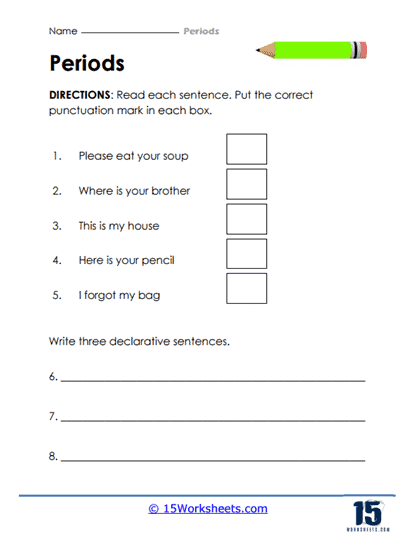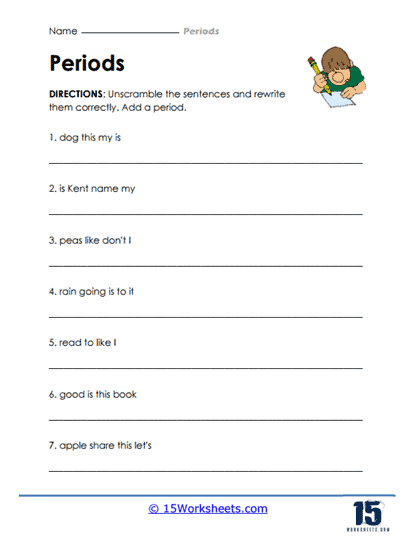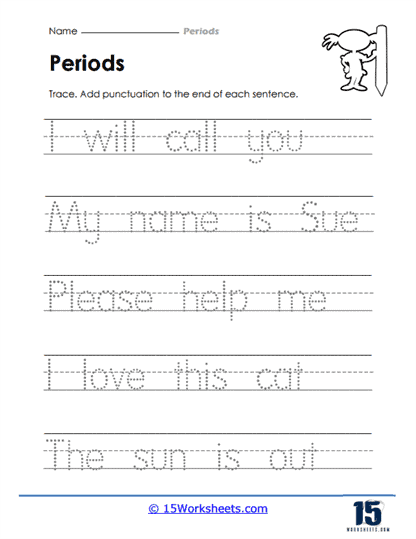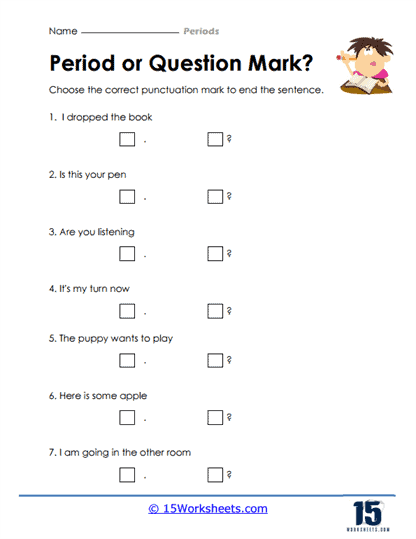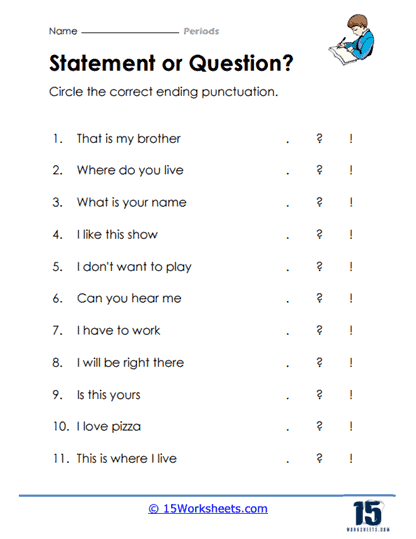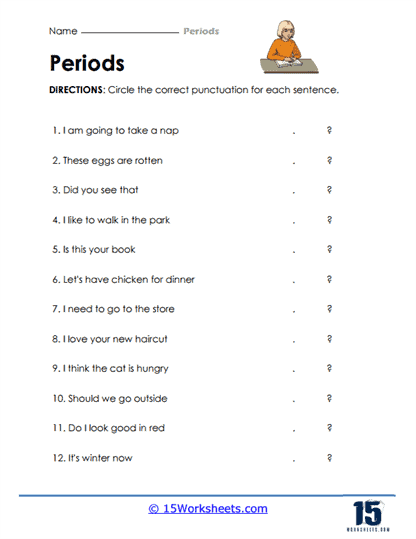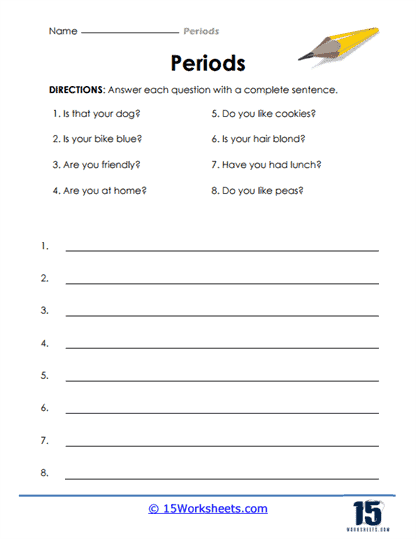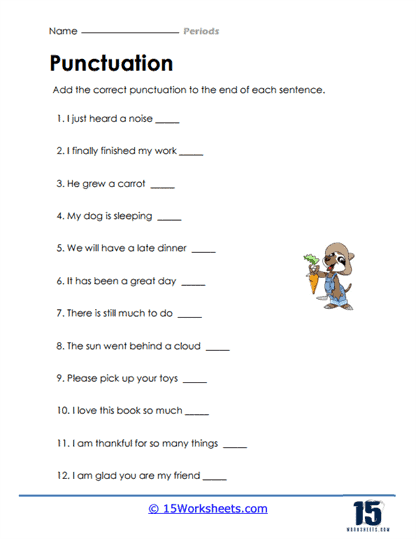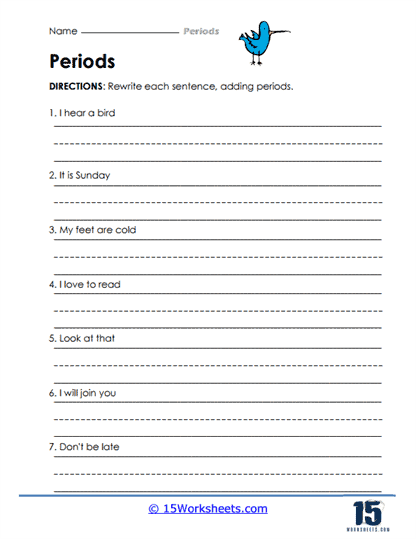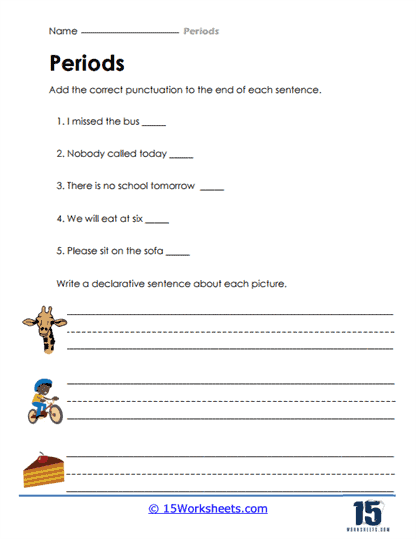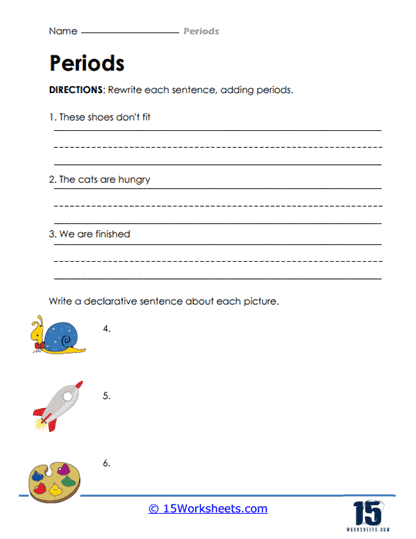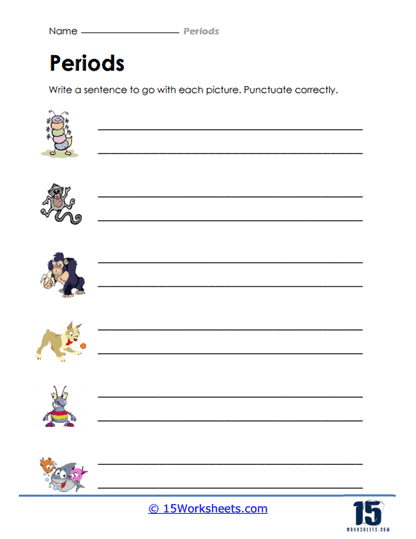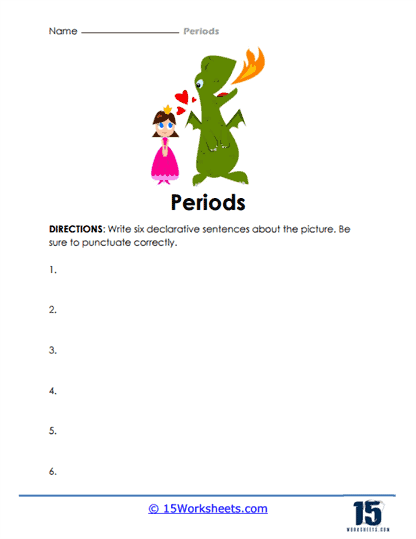Periods Worksheets
All About These 15 Worksheets
Periods, or full stops as they’re also called, are like the ‘stop signs’ in the world of writing. They signal the end of a sentence, telling us when a complete thought or idea has ended and when it’s time to take a break before moving onto the next thought. For example, in the sentence “I love to play soccer.”, the period at the end indicates that you’ve finished expressing that particular thought.
But how do we learn to use periods correctly? That’s where periods worksheets come in. These are like navigational maps that guide you on your journey through the fascinating land of punctuation.
These worksheets are filled with fun exercises and challenges designed to help you become a pro at using periods. Some worksheets have sentences that are missing periods, and your job is to put them in the right places. For instance, you might see something like this – “I have a dog his name is Max” Your task would be to correct it to – “I have a dog. His name is Max.”
Other worksheets will have you categorize sentences as complete or incomplete. Complete sentences are ones that have a subject (who or what the sentence is about) and a predicate (what the subject is doing). They also need to express a complete thought. For example, “The sun is shining” is a complete sentence, while “Because I like” is incomplete.
Across the series of worksheets you will learn about the different types of sentences. For example, a statement (like “I enjoy reading books.”) or a command (like “Close the door.”) would end with a period, while a question (like “Where are you going?”) would not.
The goal of these worksheets isn’t just to teach you where to put the period but also to help you understand why it’s needed there. They teach you to recognize when a thought is complete and when it’s time to hit that ‘stop sign’ and put a period.
Remember, while periods might seem small and insignificant, they play a huge role in making our writing clear and understandable. Without periods, our words would just run together like a non-stop train, making it really hard for anyone to follow our thoughts.
So, in a nutshell, periods worksheets are like your personal trainers in the punctuation gym, helping you build strong ‘period-using’ muscles so you can become a skilled, confident writer. And the best part? You can have a lot of fun along the way! Happy practicing!
How Do You Use A Period In A Sentence?
Using a period, or full stop, in a sentence isn’t tricky, but it’s super important for clear communication. Here are some guidelines:
End of a Sentence – The most common use of a period is to mark the end of a sentence. It signals that a particular thought or idea is complete. For example, in the sentence “I love ice cream.”, the period at the end shows that the thought about loving ice cream is complete.
After Abbreviations – Periods are also used after certain abbreviations. For instance, “Dr.” is short for Doctor, “Mr.” is short for Mister, “U.S.” stands for United States, and “a.m.” stands for ‘ante meridiem’, which is Latin for ‘before midday’.
With Initials – When you’re writing initials, you use a period after each letter, like “J.K. Rowling” or “E.E. Cummings”.
In Decimal Numbers – Periods are used to separate the whole number part from the fractional part in decimal numbers. For example, in the number “3.14”, the period separates the whole number 3 from the fraction 14.
In Web And Email Addresses – Periods are used as separators in web addresses (URLs) and email addresses. For example, “www.yahoo.com” or “myname@myemail.com”.
Not Before a Quotation Mark – In American English, when you’re ending a sentence with a quote, the period usually goes inside the quotation marks. For example, “She said, ‘I’ll be there soon.'”
One important thing to remember is that you typically only need one space after a period before starting the next sentence. This helps to keep your writing neat and easy to read.

